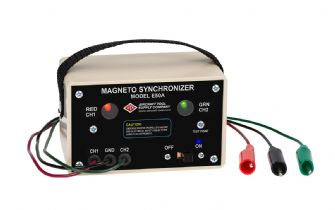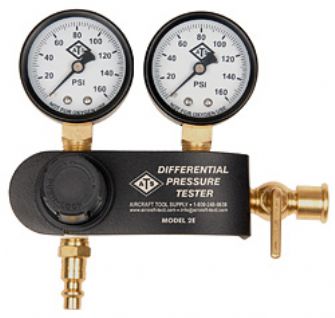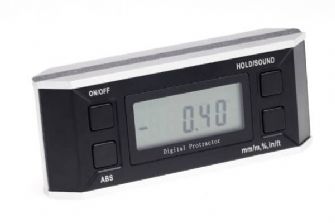Inspection Equipment
The ATS E50A Magneto Synchronizer is a modern redesign of the classic test instrument used by aviation mechanics around the world for over 50 years. It uses surface-mounted (SMD) micro-circuitry to eliminate the need for the bulky vibrator, and heavy transformers. The new technology of the E50A uses low voltage signals to measure the inductance of the magneto and precisely detect the moment the points break, without any false readings.
The ATS E50A also features enhancements to make your job easier, such as a Built-In Calibrated Test Point to validate your tester before each use; a battery monitor to give you plenty of warning before your tester runs out of power; and Quiet-Mode operation that alerts you only when the points break - so no more annoying "buzz-box" always screaming at you when you're trying to do a test.Model Differences
The new E50A measures the INDUCTANCE of the magneto coil, which is the correct way to test the magneto. Therefore, if the magneto has excessive resistance (over 100 Ohms), which may be due to burned windings or poor internal connections, the new E50A will rightly not respond to the fault. Similarly, if the magneto has very low inductance (less than .01mH), which may be due to internal shorting or a failure of the bypass capacitor, the E50A will again not respond until the fault condition is resolved.
So, in short, the new E50A is designed to work only when the following conditions are met:
The older E50 models were able to detect fault conditions (a) and sometimes (c), but they could not detect fault condition (b).
The onboard TEST POINT is designed to be an electronic approximation of an actual magneto's primary circuitry (i.e. similar inductance, capacitance, and resistance). So, using the test point is the best way to confirm the operational capability of your E50A prior to application.
Categories
- * CHRISTMAS GIFT IDEAS *
- * SALE SPECIALS *
- * SHOP BY BRAND *...
- Aircraft Accessories...
- Aircraft Parts...
- Aircraft Tugs...
- Avionics...
- Batteries
- Books & Theory Kits...
- Charts & Maps...
- Flight Simulation...
- Gift Vouchers
- GPS & Accessories...
- Hardware & Tools...
- Headsets Helmets Spares...
- Instruments...
- Metals and Plastics ...
- Motor Racing Parts...
- Pedal Planes...
- Pilot Gear...
- Safety Equipment
- Satellite telephones
- SmartPhone/Tablet Accessories
- Stewart Covering Systems...
- Tools & Fuel Testers
- Weather Stations
- Weathervanes (click on picture to order)
- Windsocks & Frames
- Wood Products...



_thumb.jpg)






